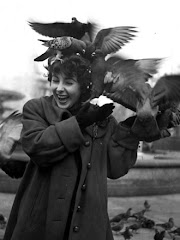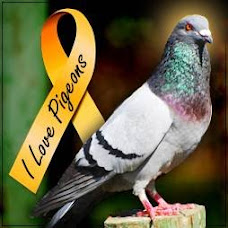If you´re a city dweller, chances are you see them everyday - strolling down the sidewalk with their friends, having lunch at a local cafe, or just hanging out in the park. But for as much as we share with our urban lifestyles, few animals are as misunderstood or as maligned as the humble pigeon. They are such a part of life around the world that it´s not so strange to hear otherwise sensible animal-lovers refer to pigeons as ¨rats with wings,¨ offering nary a word on their unique history or simple beauty. Perhaps the time is nigh to better understand our feathered city-dwelling neighbors who´ve been pigeonholed too long.
Of the 309 different species of pigeon, Rock Pigeons are the ones most acquainted with urban life - but despite the advantage they take of human infrastructure, there was a time that even they had to rough it. In fact, the species has been coolly strutting around for about 20 million years, long before the advent of bread crumbs or bronze statue perches. In the wild, the animals´ original habitat was on the rocky cliff sides of Africa, Asia, Europe, and the Middle East.
Although nowadays many people aren´t big fans of the birds, one reason they´re so numerous today is that once pigeons were highly regarded. Between 5,000 to 10,000 years ago, the birds were first captured and raised by humans - primarily for food, but also to carry messages over long distances. The animals´ feathers, too, were prized for their attractive feathers and unique coloring. Selective breeding in centuries past is one reason that pigeon color patterns are so varied today.
Early on, humans took note of pigeons´ uncanny sense of finding their way home and employed them with carrier duties, giving rise to Messenger Pigeons. Even Julius Caesar took advantage of these clever birds, using pigeons to send war reports from the front line. The birds were used in a similar capacity for centuries, before radio and telephone communication made them pretty much obsolete. But some pigeons enlisted to aid in war efforts turned out to be quite brave as well.
One popular story from World War I surrounds a pigeon named Cher Ami, stationed with American troop fighting on the front-line in France. When soldiers from New York´s 77th Division found themselves under siege from friendly-fire, they tried sending a note via Messenger Pigeon to inform the other troops that they weren´t the enemy, but the bird was shot down. Another bird was sent, but it too was killed. In a desperate third attempt, the soldiers tied a note to Cher Ami: "Our artillery is dropping a barrage on us. For heaven's sake, stop it!" The bird was shot too, several times, but managed to keep flying until the message was delivered. For this bravery, Cher honors back home. His body can be seen at the Smithsonian Institute.
Despite occasionally being honored for their service in war-time, pigeons as a symbol are have quite a different reputation under their more flattering pseudonym - the dove.
But even the humble pigeon, as a city-dweller, doesn´t get credit where credit may be due, in part because of certain misconceptions that the birds spread disease to humans. Although they can carry parasites and viruses, like West Nile, pigeons are thought not to be transmitters of it. Still, many urban areas have gone to great lengths to dampen their presence about town.
London´s Trafalgar Square was once famed for its vibrant pigeon population, considered a tourist attraction in and of itself. In 2003, however, the city´s mayor banned the sale of pigeon food, hoping the birds would move on. Activist groups, like Save the Trafalgar Square Pigeons, sought to keep the birds around and continued to feed them anyways.
Other cities have taken a more drastic approach to combating pigeons, even resorting to the use of poisons, though the practice isn´t preferred since it can pose a threat to other animals too. Selectively removing fertilized eggs from specially installed coops and even birth control are amongst the other creative, slightly more humane solutions to too many pigeons in cities across the world.
It´s only been a few centuries since the birds were first brought to the Americas, but now the Rock Pigeon can be found in nearly every city in the world with a population numbering in the tens of millions. Some other pigeon species, however, haven´t fared quite as well. Eleven species of pigeon have gone extinct - like the famous over hunted Dodo bird - while several others are considered threatened.
City pigeons, though clearly outside of their natural habitat (just as we are, I suppose), are animals of unique talent a beauty - even if they may eat our refuse and occasionally sully our memorialized forebearers. Even pigeon loving groups have been established, like Cornell University´s Project Pigeon Watch, aiming to redefine how the world looks at the bird.
Who knows, with an open mind and little understanding, perhaps one day the pigeon will be thought of with a bit more respect, and even adoration. You´ve got to admit, they are pretty darn coo.
Monday, August 30, 2010
Subscribe to:
Post Comments (Atom)











No comments:
Post a Comment